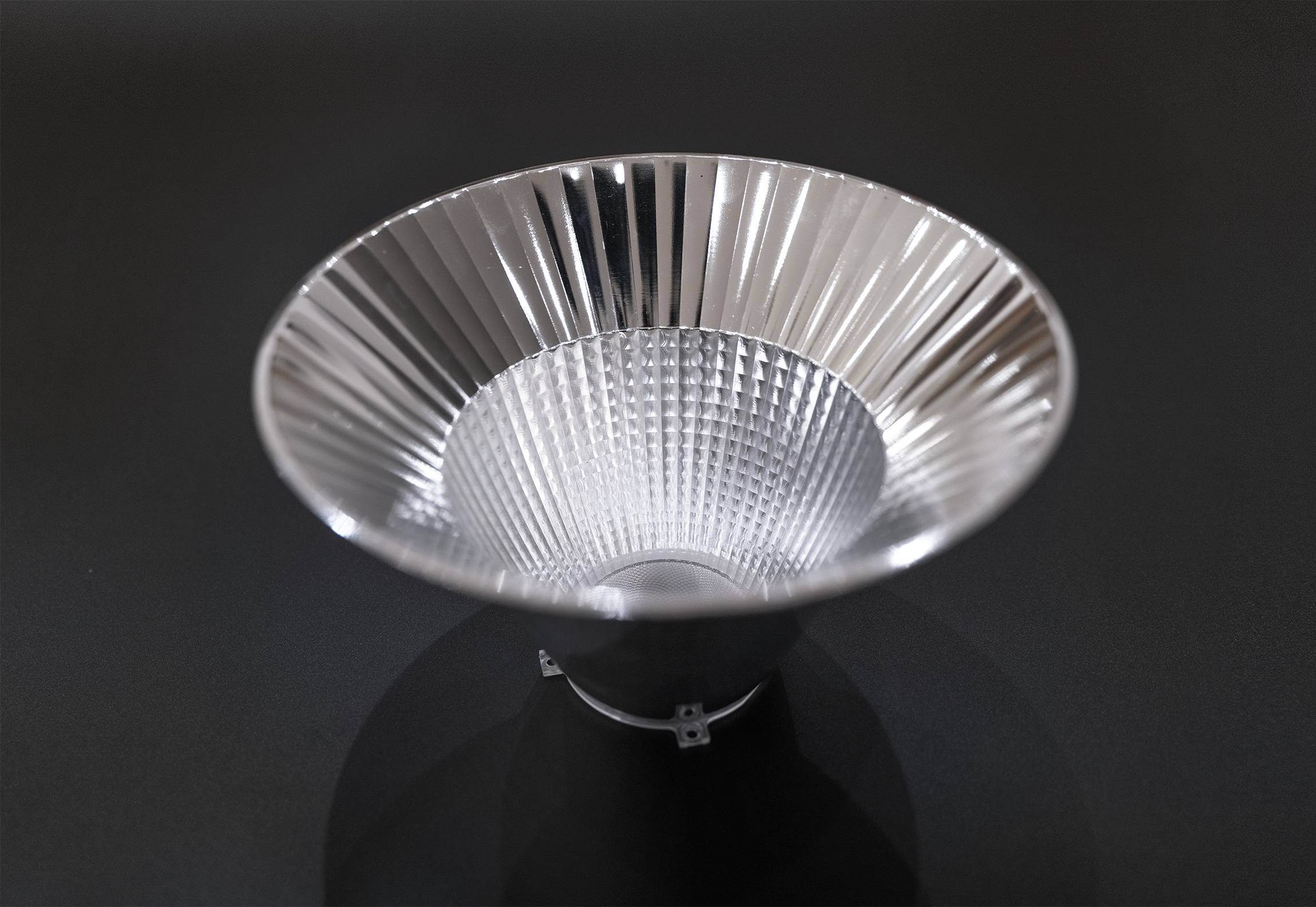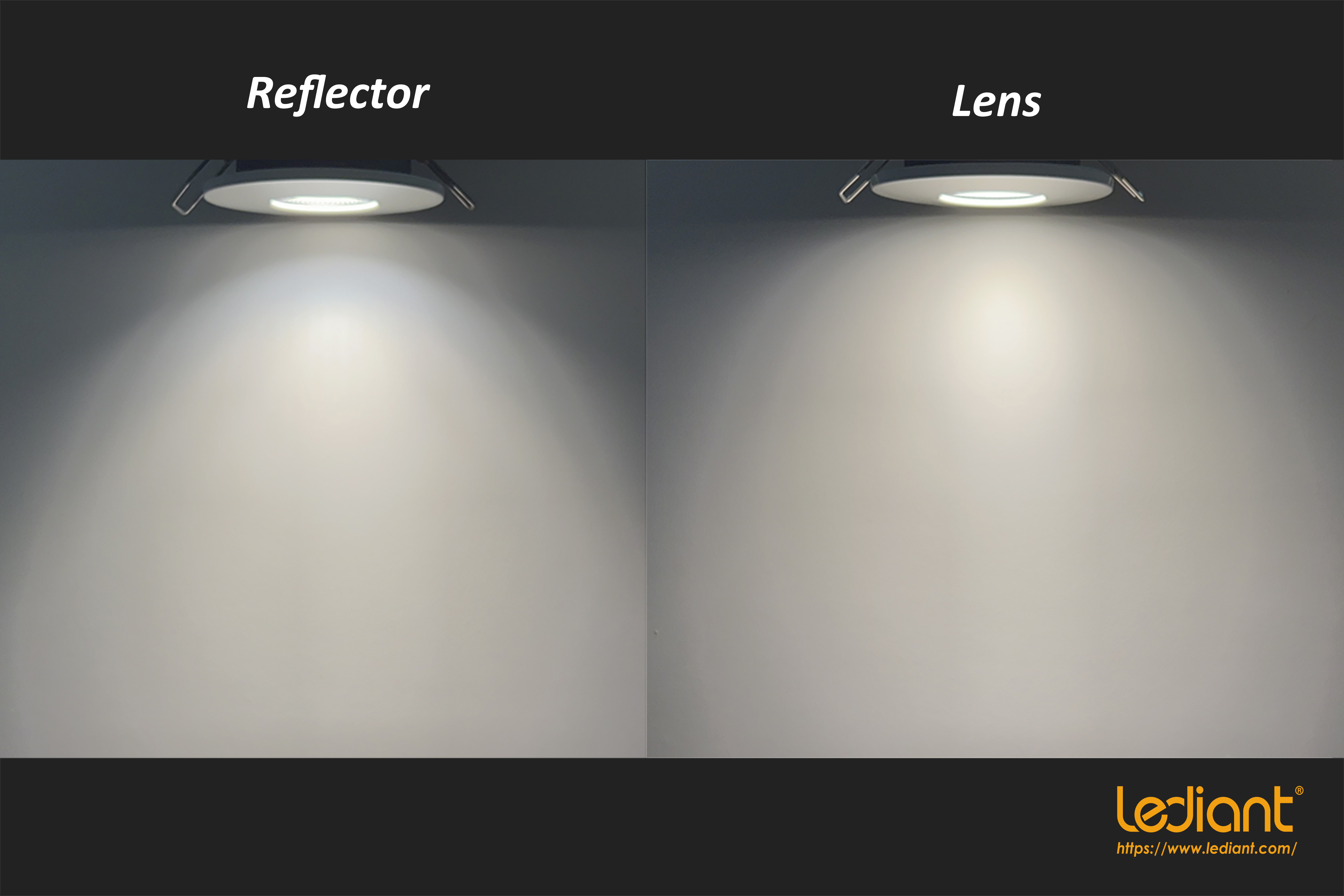Downlights can be seen everywhere in our daily life. There are also many types of downlights. Today we will talk about the difference between reflective cup down light and lens down light.
What is Lens?
The main material of lens is PMMA, it has advantage of good plasticity and high light transmittance (up to 93%). The disadvantage is low temperature resistance, only about 90 degrees. The secondary lens is generally designed with total internal reflection (TIR). The lens is designed with penetrating light in the front, and the conical surface can collect and reflect all the side light. The overlap of the two kinds of light can get perfect light utilization and beautiful spot effect.
What is TIR?
TIR refers to “Total Internal Reflection”, which is an optical phenomenon. When a ray enters a medium with a higher refractive index into a medium with a lower refractive index, if the incident Angle is greater than a critical Angle θc (the ray is far from the normal), the refracted ray will disappear and all the incident ray will be reflected and not enter the medium with a lower refractive index.
TIR lens: improve LED light energy utilization
TIR lens adopts the principle of total reflection, which is made by collecting and processing light. It is designed to focus light directly in front with a penetrating type and the conical surface can collect and reflect all the side light. The overlap of these two kinds of light can get perfect light to use and beautiful spot effect.
The efficiency of TIR lens can reach more than 90%, with the advantages of high light energy utilization, less light loss, small light collecting area and good uniformity, etc. TIR lens is mainly used in small-angle lamps (beam Angle <60°), such as spotlights and downlights.
What is reflector?
Reflective cup is to point to use light source bulb as light source, the reflector that needs distance to gather light illuminates, usually cup type, commonly known as reflective cup. Usually, the LED light source emits light at an Angle of about 120°. In order to achieve the desired optical effect, the lamp sometimes uses a reflector to control the illumination distance, illumination area, and spot effect.
Metal reflector: Need stamping & polishing technology and has deformation memory. The advantage is low cost and temperature resistant. It is often used for low grade illumination requirement.
Plastic Reflector: Only need one demould. The advantage is high optical precision and no deformation memory. The cost is moderate and it is suitable for lamp that the temperature is not high. It is often used for middle and high grade illumination requirement.
So what’s the difference between TIR lens and a reflective cup? In fact, the basic working principle of them is the same, but relatively speaking, TIR lenses have less loss for the reflection interface.
TIR lens: The interaction between total reflection technology and medium, which has both physical and chemical reactions. Each ray is controlled and utilized, generally without secondary spots, and the light type is beautiful. The lens is more rounded and the center beam is more uniform. The light spot of the lens is relatively uniform, the edge of the light spot is round, and the transition is natural. It is suitable for the scene with the downlight as the basic lighting, and also suitable for the scene with uniform projection. The lens spot is clear, the dividing line is not obvious, and the light is slowly too uniform.
Reflector: Pure reflection control light. But relatively for the second spot of light is big. Major light through cup surface reflection goes out, light type is decided by cup surface. In the same size and angle of the case, because the intercept light angle of the reflective cup is larger, so anti glare will be better. A large part of the light is not in contact with the reflection surface is not controlled, the secondary spot is large. Reflective cup of light out of the edge and angle sense is relatively strong, the center of the beam of light is stronger and farther.
The reflective cup has a more concentrated central light spot and an inverted V-shaped edge, which is suitable for scenes with prominent small sides. Reflective cup light spot is relatively clear, cut light edge secant line is particularly obvious.
If you ask which is better, TIR lens or reflector? That has to be considered for practical purposes. As long as it can achieve the desired optical effect, is a good optical device. For example, an LED light source usually emits light at an Angle of about 120°. In order to achieve the desired optical effect, the lamp sometimes uses a reflective cup to control the light distance, light area, and light spot effect.
Post time: Sep-22-2022



